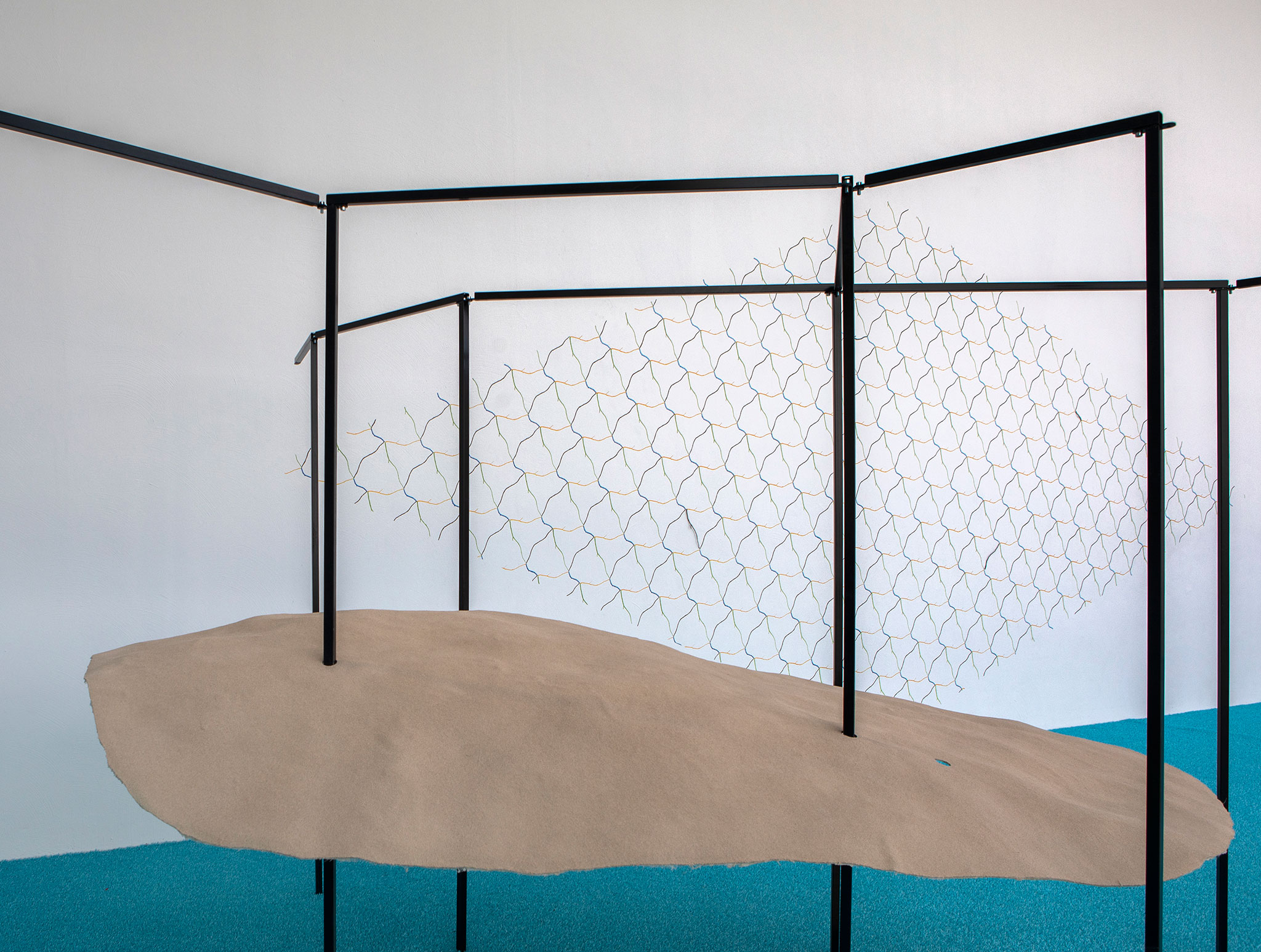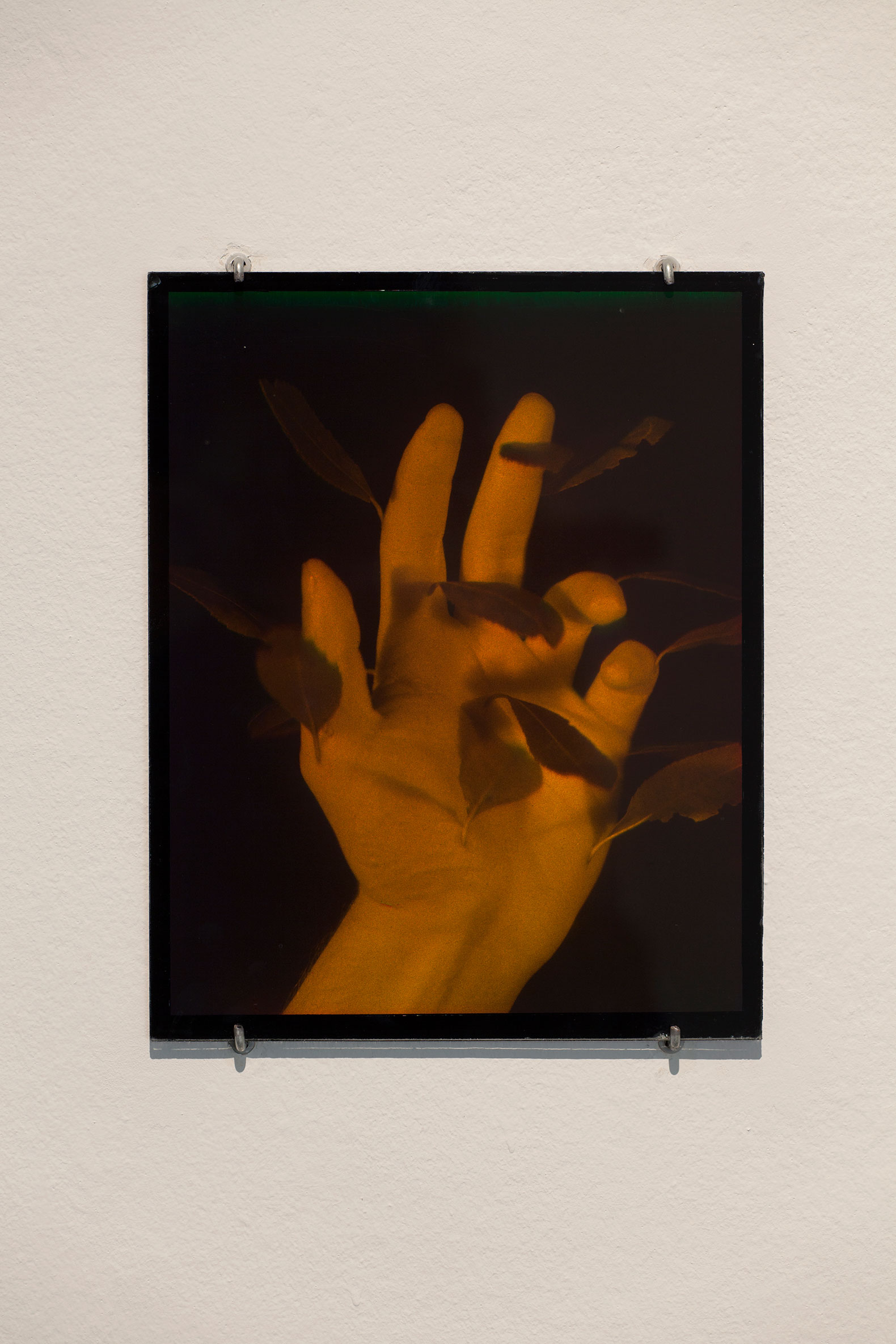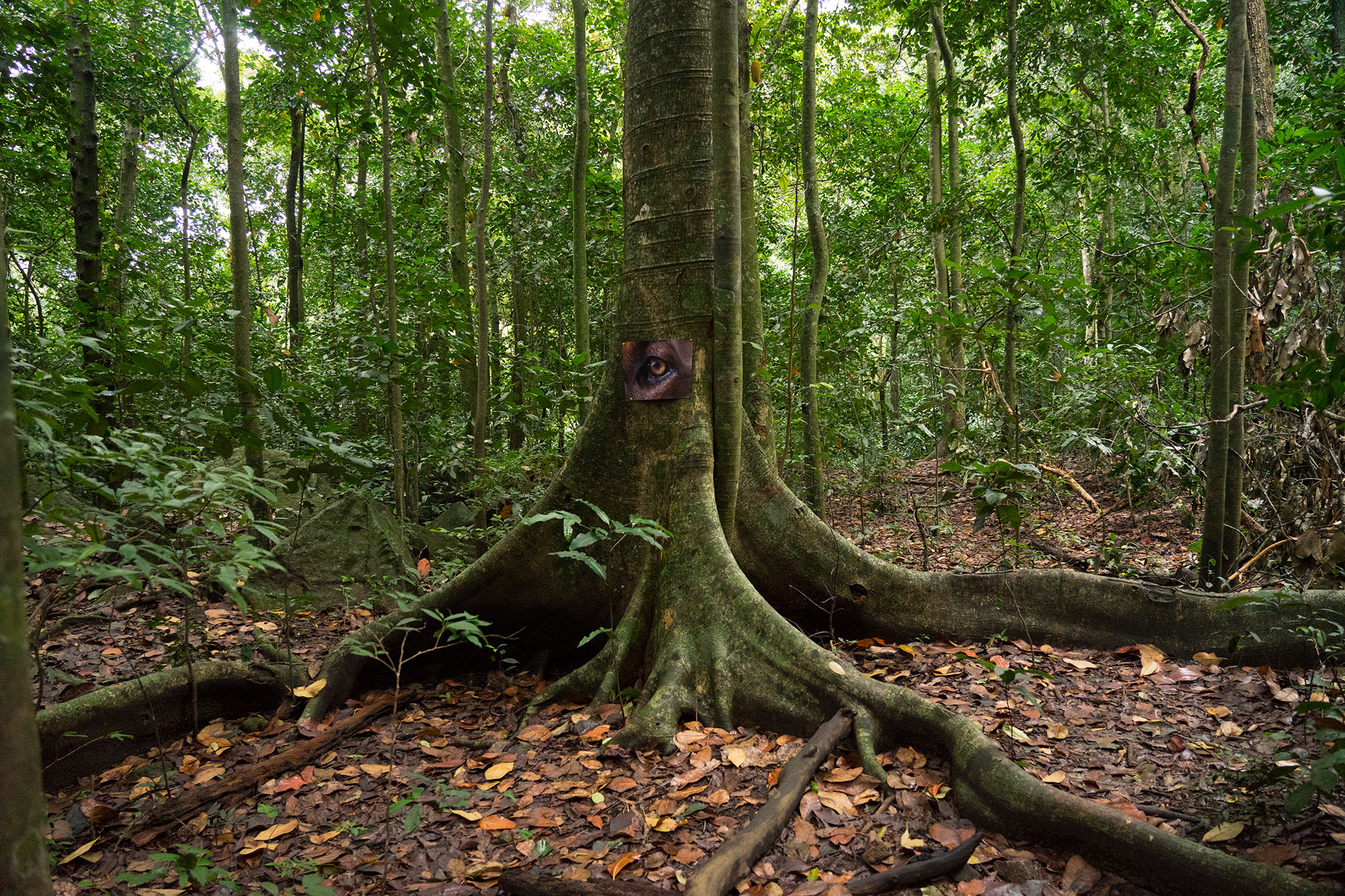Mangrané's work occupies two floors of the Kiasma Museum. In one of them, a visual reflection is made through a single colour, a blue carpet together with the light that filters through the windows, equipped with the vinyl of this colour, creating a special, almost intangible and changing environment. The gallery installation has different sculptures that complement the experience of the tour.
Smell and taste also play a leading role, and the section named "Naranja Naranjas" (2001) invites visitors to make and drink orange juice in a translucent pavilion with orange lights. While the smell and taste remain recognizable, the lighting effect distorts the colour and appearance of the fruit and juice. A synesthetic experience that creates dystopian sensations.
Smell and taste also play a leading role, and the section named "Naranja Naranjas" (2001) invites visitors to make and drink orange juice in a translucent pavilion with orange lights. While the smell and taste remain recognizable, the lighting effect distorts the colour and appearance of the fruit and juice. A synesthetic experience that creates dystopian sensations.

Daniel Steegmann Mangrané, "Economic Dune", Model without Qualities 2011. Photograph by Petri Virtanen / Finnish National Gallery.
Ordinary experience is transformed by Mangrané into a new unknown sensation. Illuminations distort the colours, appearances, and even the image that one has of a fruit or of a juice that derives from it. The environment is continually changing and you see that show that he tries to convey his ideas.
Since 2004, Mangrané based in Rio de Janeiro, so his work refers to the tropical jungle of Brazil. His practice is also strongly influenced by nature and the planet's climate crisis. Branches, leaves and insects are recurring motifs, their geometric shapes reflect the relationship between abstraction and nature. These works become a game with the environment.
Since 2004, Mangrané based in Rio de Janeiro, so his work refers to the tropical jungle of Brazil. His practice is also strongly influenced by nature and the planet's climate crisis. Branches, leaves and insects are recurring motifs, their geometric shapes reflect the relationship between abstraction and nature. These works become a game with the environment.

Daniel Steegmann Mangrané, "Mano con hojas", 2013. Photograph by Aurelien Mole.

Daniel Steegmann Mangrané, "La Pensée Ferale", 2020.
The exhibition also has fragments of audiovisual works created by him. The artist encourages us to look twice at the world around us, to look for the metaphors of nature and the mirages that he can create organically. His complex dynamics make us look for the border that exists between the natural and the artificial.





















![10 Architecture Studios Led by women [XII] 10 Architecture Studios Led by women [XII]](/sites/default/files/styles/mopis_home_featured_block_desktop/public/2025-03/metalocus_10-arquitectas-xi_01b.jpg?h=3b4e7bc7&itok=HeMnE4WM)



















